Everybody thinks they know what a western is. Frank Gruber, a long time pulp author with a flair for self-promotion, categorized the western into seven categories:
- Union Pacific story. Entry of a railroad, a telegraph line, or some other type of modern technology into a western environment.
- Ranch story. A ranch is under threat, from rustlers or neighboring landowners.
- Empire story. A classic rags-to-riches plot of building up a ranch from scratch.
- Revenge story
- Cavalry and Indian story
- Outlaw story. Focuses on one or more outlaw gangs.
- Marshal story. Focuses on one or more lawmen.
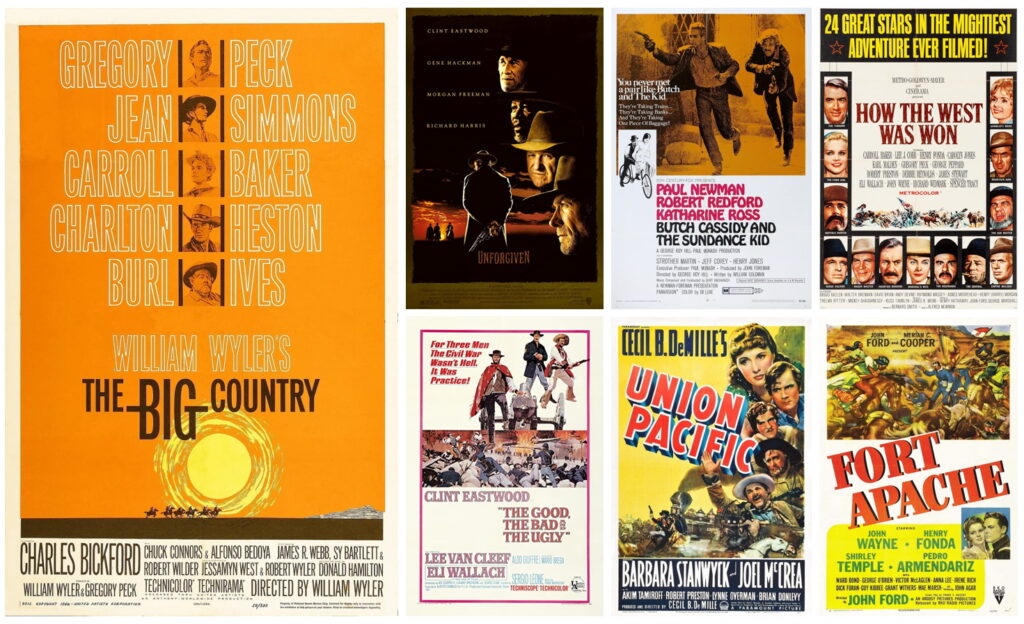
In my reading I’ve come across these plots frequently, but such categorization does disservice to writers who stayed away from these tropes. Like Roe Richmond. That may come as a surprise to those who’ve read Richmond’s paperback fiction, especially the Lash Lashtrow series, a stereotypical Texas Ranger who cleans up crime. In standalone paperbacks and pulp stories, though, his talent for violent action and non-stereotypical plots shine through.
The Stories
The Gunhand’s Turn (Famous Western, August 1953): Two gunslingers line up for a shootout that will decide whose boss will rule the range. Richmond slowly ratchets up the tension as we get a glimpse into one of the gunslingers, Alrick, who wants to settle down but finds troubled men seeking him out for his reputation. When the rival enters town and they encounter each other in the street, they find out that their bosses have set them up. They’ve outlived their utility and need to go. Do they? Hell no.
Golden Circle (Action-Packed Western, January 1955) chronicles the bloody history of a bag of gold dust as it passes from owner to owner.
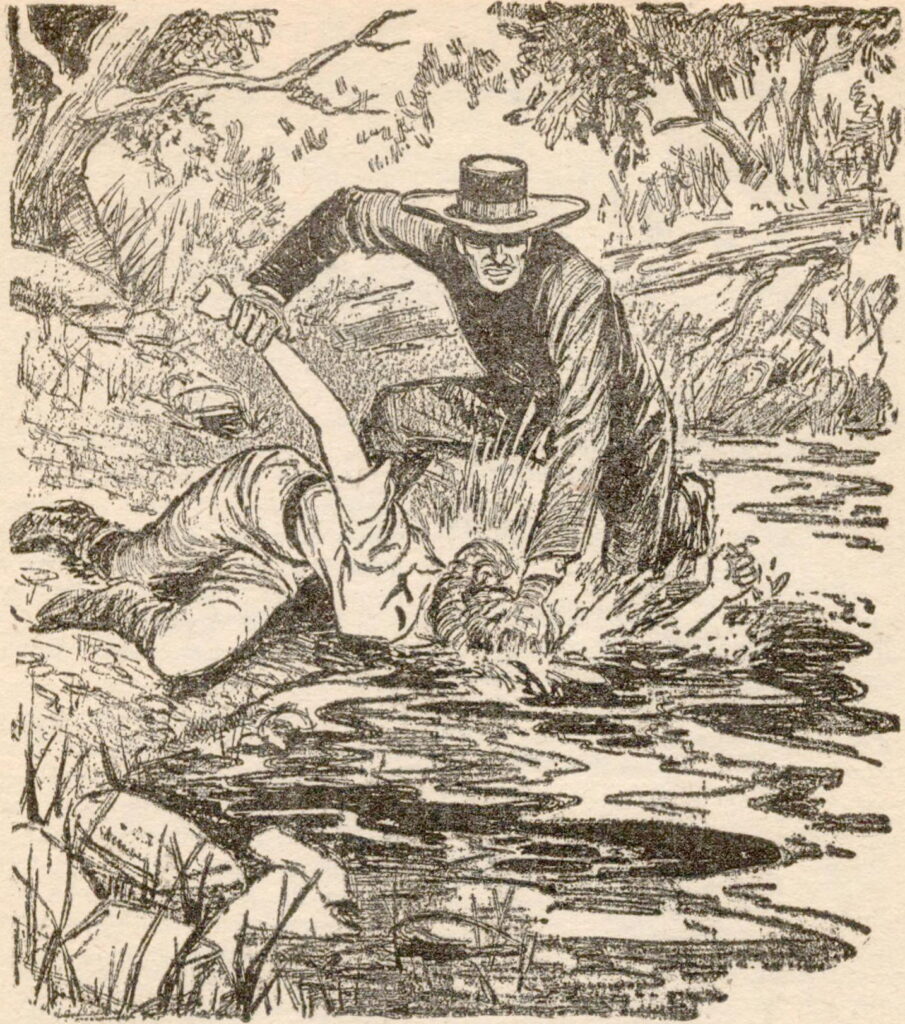
Even more interesting is Six Guns – Six Graves (Exciting Western, May 1953), which follows six outlaws as they try to establish a ranch with their loot. The isolation and harsh weather starts them rubbing each other the wrong way. The ending is hardly credible, but the plot and characters are believable for the most part.
Last of the Fighting Sugrues (Dime Western, June 1949). Three robbers come to a town planning to rob the bank. Then they find out that their enemies are planning the same thing. They lay in wait, ambush the enemies and save the bank. Two become lawmen, but will they go back to banditry when the reward money runs out?
Who was Roe Richmond?
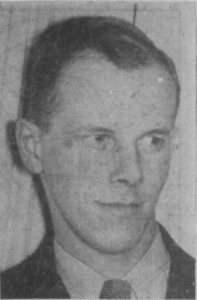
Born in Barton, Vermont on 19 Jan 1910, Roaldus Frederick Richmond was the son of Frederick E and Abby Weed Richmond. His father worked as a mechanic and seems to have lived in and around Vermont all his life. Roe, on the other hand, studied in Barton, then in Franklin Academy, New Hampshire and graduated in 1929. From school, he went to the University of Michigan where he studied journalism and English literature. Both at school and college, Roe was an athlete who represented his institution in track, baseball and basketball.
At college, his professors had encouraged him to write. After college, Roe lived an itinerant lifestyle as a semi-professional touring baseball and basketball player. He also spent some time working as a cowboy on a college fraternity brother’s ranch in Wyoming. And wrote stories on the side. His first published story, Thanks for Nothing, was featured in The Best American Short Stories of the year, 1933. Perhaps on the strength of this, he got a job with the Vermont Writers Project in 1935 and helped put together the WPA Guide to Vermont.
In 1938, his son, Frederick (Fritz) was born. Roe started writing stories for the sports pulps based on his experiences as a professional athlete and continued writing them for the next seven years almost exclusively. In the mid 1940s, he started writing westerns and by the 1950s, they formed most of his output. But his primary markets, the pulp magazines, were dying.
He switched to book-length fiction. Conestoga Cowboy (1949) was his first book, published by Phoenix Press and later republished by Lion Books under the title The Utah Kid. Roe quickly turned out five books in the next three years (Mojave Guns, Maverick Heritage, Riders of Red Butte and Death Rides the Dondrino among them) with a variety of publishers but mass market success eluded him. Still, he was recognized enough to be a founding member of the Western Writers of America in 1953. By the beginning of the 1960s, Roe stopped writing and was working with a typesetting firm in New Hampshire.

In 1972, he decided to try writing again and created the character of Lash Lashtrow, Texas Ranger who rides into trouble and cleans up the town every time.

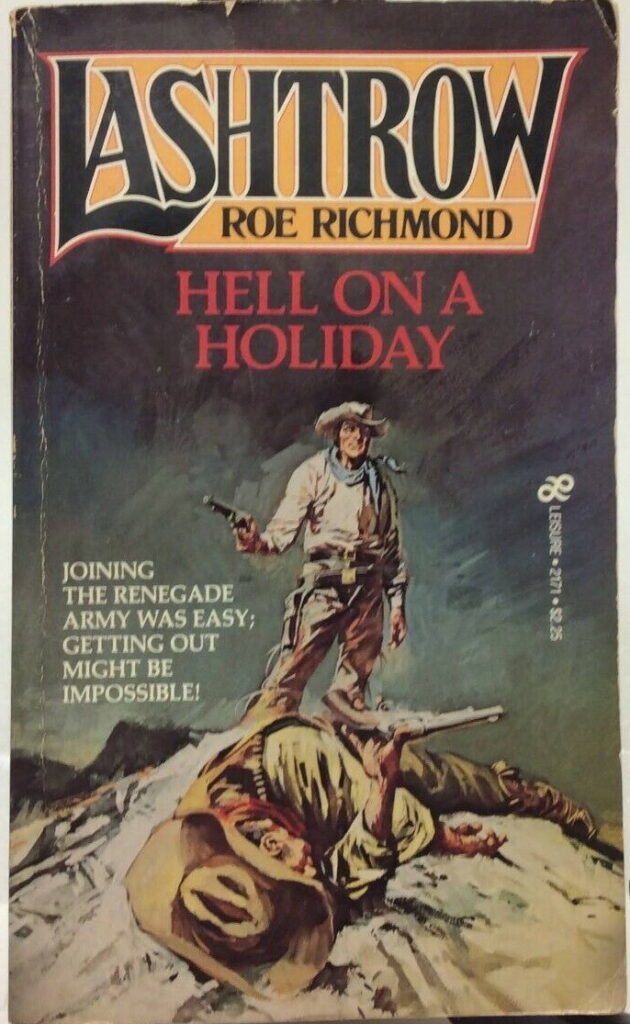
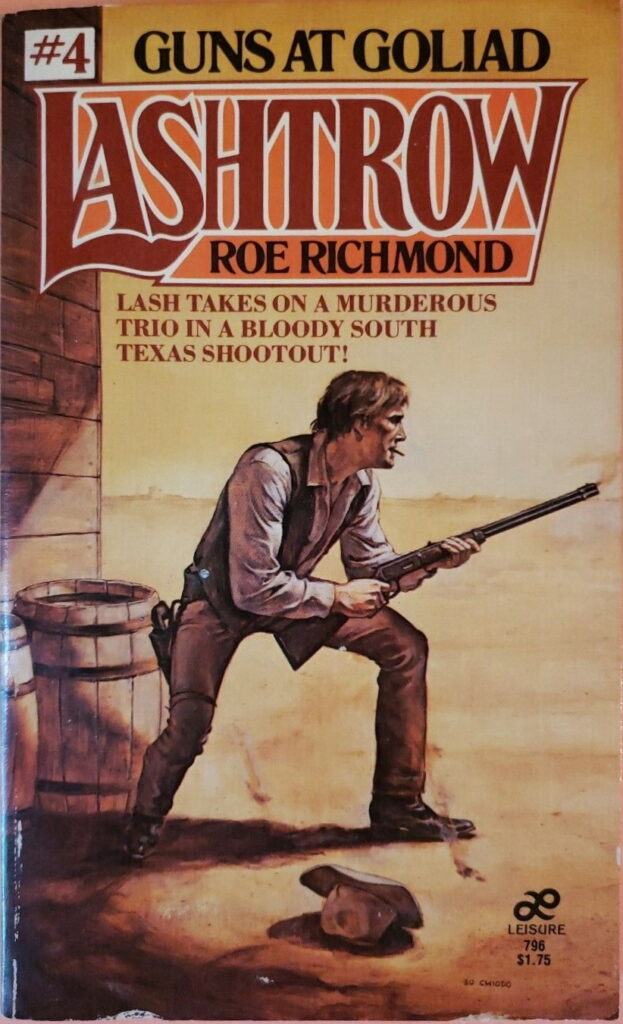
A few books followed and an editor at Tower Books tried to build up his brand without success before Roe’s death in 1986. I hope you’ll try a few stories of his.
That was a good read and those short stories have piqued my interest. Thanks.
Sam
Terrific piece! Must try to find some of his Richmond’s work, thank you for the recommendation.
he was my neighbor in nh when i was growing up…..nice guy.huge red sox fan….ill check out a couple of the westerns
Let us know what you think of them when you read them. They’re easy enough to find.
Thanks for this biography of Roe Richmond. I stumbled on this bio while doing a web search trying to find out who he was, because I read one of his paperbacks, “Carikaree Crossfire,” about main character Lash Lenyard. I have no idea where I got the book (possibly from a stack of used books in a nursing home reading room?), but I read it because I’m a big fan of Louis L’amour’s books and this looked to be in the same genre, and was published by Bantam Books, which also published L’Amour. Amazon website says Bantam published it in 1986, which you indicate was the year of his death, so maybe this was his last publication(?) – or perhaps Bantam published a story released earlier(?). (The front cover and pages were ripped off the book, so I don’t have a copyright page.)
I was pretty surprised to find your post written so recently here in 2023. I was interested to know what kind of life experiences Richmond may have had to obtain ideas and material for writing western stories. It’s interesting that he grew up in very rural Vermont, but your bio mentions only a short amount of time in the West.
Anyway, the story was about a lone outsider up against towering odds in trying to avenge the deaths of his family members whose lives were taken when he was a boy. He runs up against a well-established power broker rancher and the gun slingers in his employ. There’s a love interest as well, if he can survive to pursue it. Anyway, I enjoyed the read well enough.
Also, I love the cover art that Bantam put on the book of the fictional protagonist. It’s similar to the Bantam cover art of the protagonists on lots of L’Amour books – very realist-looking, color paintings of the hard men of the west. I never looked into it, but that cover art would probably be a great subject for a column by itself.
Thanks again, and all the best.
It’s always good to come across another person who reads western fiction. Makes me feel less like the Lone Ranger and more like I’m part of the Texas Rangers 🙂
Yeah, Richmond’s time in the west was brief but he seems to have made contacts and heard stories worth retelling in that small window. And his gritty, violent westerns are very close to hard-boiled detective fiction, another genre I enjoy.
Pulp and paperback illustrations added to the charm of the stories, especially when they matched the contents. I love the black and white stuff, too.
Good to have you here and I hope you’ll tell us about writers you like and don’t find mentioned here.
Thanks for the reply, and sorry it took me over a month to wend my way back here to see your reply.
“It’s always good to come across another person who reads western fiction. Makes me feel less like the Lone Ranger and more like I’m part of the Texas Rangers.” – Ha, yeah, it seems we’re mostly part of a bygone era of America that has largely slipped away. It’s an unhappy feeling. The books weren’t just about the events of the stories, but bigger things, like the promise and hopes the wide open spaces represented, along with the morality struggle of the people trying to build or preserve a certain world or code of life. You definitely feel happier when you run into someone else who grew up with or appreciates the same world.
“Good to have you here and I hope you’ll tell us about writers you like and don’t find mentioned here.”
– Well, unfortunately, I probably won’t be able to be a big contributor from that standpoint because the authors I read are mostly the well-known ones. Although I started out as a kid reading the line of Hardy Boys books, once I got a little older I read Michener’s books, then I ran into Louis L’Amour’s books and they hooked me and pretty much provided me with everything I wanted. So I didn’t really become more widely read in the “pulp” genre (aside from the hard-boiled stuff I read in literature classes in high school/college).
In the 80’s is signed up for a subscription with Bantam Books who began periodically sending me faux leather bound Louis L’Amour collection books, and I devoured every one and still have the collection.
I first stumbled onto one of his Sackett family series paperbacks from a gas station store on a long road trip across the country and loved reading about the sweep of American history as seen through the eyes of multiple generations of a pioneering family that started in the fens of western England and eventually worked their way clear across America.
I loved how L’Amour sprinkled the books with actual places and history – which often caused me to go looking into the landscapes and history for myself. Highly recommended series, but then I’m probably not saying anything people on your site don’t already know about.
If anything, I’d say that reading L’Amour eventually caused me to look away from fiction and more towards trying to learn about life through reading real history. As you actually dig into history you begin to appreciate the truth of the maxim “history is written by the victors,” and I’ve been stunned to realize the extent of false story lines of “history” I and the rest of the general public were fed in our lives. It’s really very interesting to start to opening your eyes to real life and see how you’ve been led astray.
I won’t continue down that path, but one of my favorites was L’Amour’s autobiographical “The Education of a Wandering Man,” where he goes through the historic and classic books he read during his wandering years that shaped him and inspired his interest in history. He often mentioned “Plutarch’s Lives,” and I have plowed through some of that, but it’s by no means an easy read compared to historical novels and pulp genre works.
Apparently the America of the past was largely educated through reading classic books, but it seems obvious that’s no longer the case today. I just read the opening chapter of “Moby Dick” the other day, and Melville mentions the story of Cato the Younger in there, which is recounted in Plutarch’s Lives.
I remember L’Amour mentioning in “Education of a Wandering Man” that while many people said they were too busy to read books, he once read something like 300 books in a year just by always having a book or two in his pocket and reading them wherever he was, such as waiting in a train or bus station, onboard a ship, waiting in a doctor’s office, waiting an appointment or job interview, during breaks or lunch hours, or whatever. Nevertheless, the internet for me has become the all-sucking impetuous vortex that keeps me from reading books the way I used to.
Best regards,
>> “Good to have you here and I hope you’ll tell us about writers you like and
>> don’t find mentioned here.”
> Well, unfortunately, I probably won’t be able to be a big contributor from
> that standpoint because the authors I read are mostly the well-known ones.
I think that’s an equally useful perspective. I need to write more about the pulp roots of mainstream writers.
> I remember L’Amour mentioning in “Education of a Wandering Man” that
> while many people said they were too busy to read books, he once read
> something like 300 books in a year just by always having a book or two in
> his pocket and reading them wherever he was,
Yeah, which is why e-book reader apps on my phone are so nice. Always have something to read and what a variety to choose from.
As an addendum to my prior post here, I now see you have many articles on this site about pulp fiction art and illustrators, so I’ve started reading a few of them.